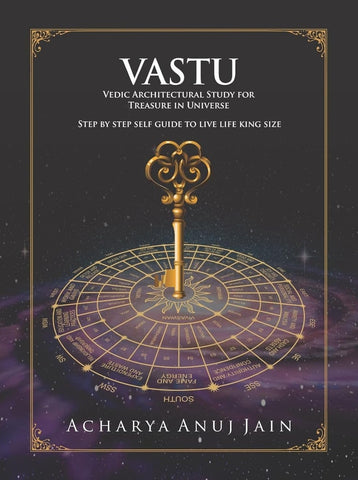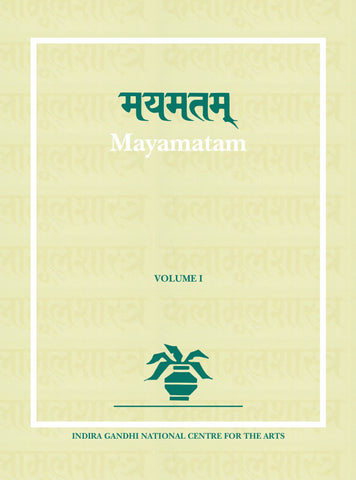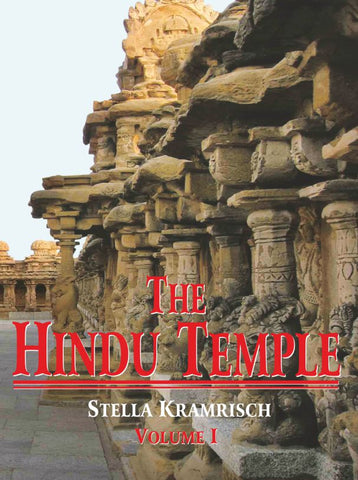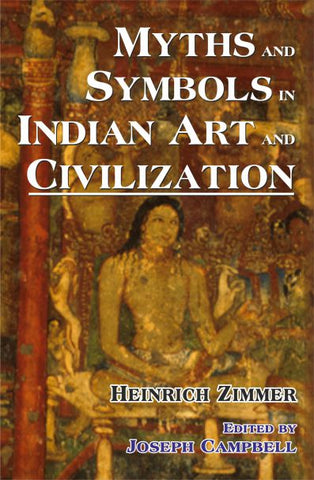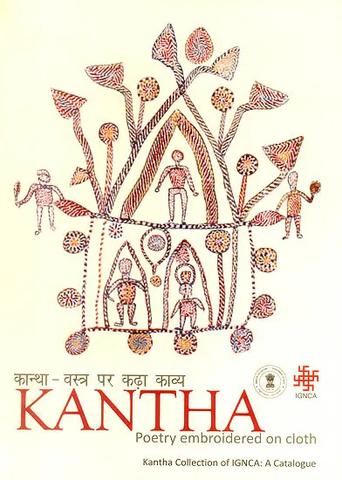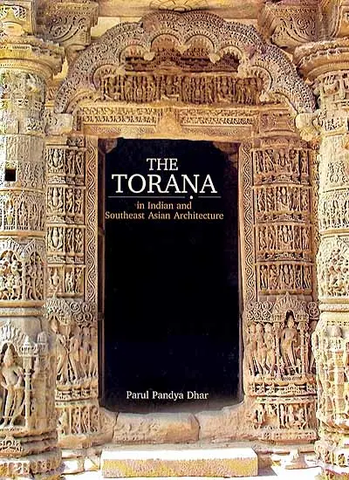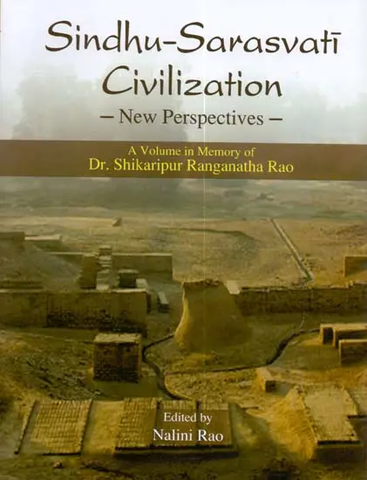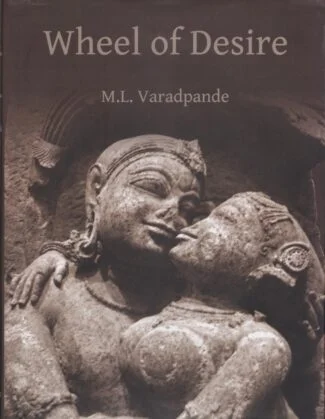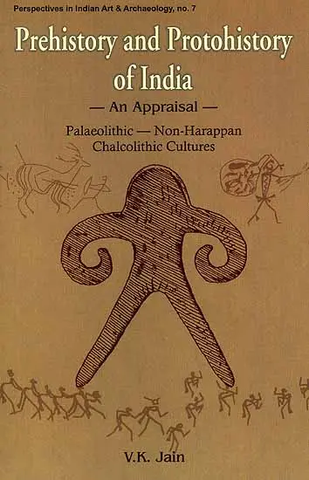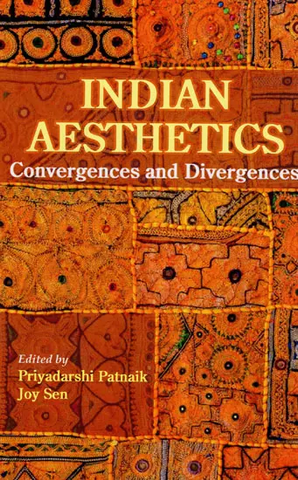Your cart is empty now.
This collection of essays is the first treatment of Hindustani Rhythm in the way of modern aesthetics. It seeks, on the one hand, to fix and distinguish the meaning of such words as matra, zarab, bol, laya. Tala theka, sama; and on the other hand, to seize the details of actual rhythm as it appears to contemplation. Nowhere in the book does theory over-shadow rhythm. But some wider questions have also been taken up. How, if at all, is rhythm an autonomous art? What are the strands of its winged form; its accent of magic and its prime evocativeness? Is it proper to speak of rhythm as 'expressive' or 'symbolic'? Does our tala seem 'embodied' as it swings and soars apace?
Whoever is responsive to rhythm can profit from this book. It is of value to the Kathak dancer, too; and to all those who would see rhythm saturate, and not merely circle. The fabric of song.
Dr. Sushil Kumar Saxena teaches philosophy at the University of Delhi. Here, his main areas of interest have been metaphysics and the philosophies of art and religion. Beginning in 1964, Dr. Saxena has lectured postgraduate students on the philosophy of art for about fifteen years. His essays on aesthetical anthologies of national importance. And in the following well-known journals: The British Journal of Aesthetics and Religious Studies (U.K.); Diogene (France); Kant Studien (Germany); II Velro (Italy); and Philosophy East and West and The Journal of Aesthetics and Art Criticism (U.S.A.). His latest article, 'A Reply to My Gritics', appeared in the April 1979 issue of Philosophy East and West.
Within the country, Dr. Saxena is regarded as perhaps the only person doing philosophical aesthetics with an emphasis on Hindustani music, rhythm, and Kathak Dance. He has contributed papers to National Seminars on Music, Rhythm, and Kathak Dance organized by the Central and State Akademies; served as 'a music critic' to The Hindustan Time (New Delhi), and on All India Radio's Informal Consultative Committee for the National Programme of Music (73, 74), as well as on Government of India's Selection Committees for awarding cultural scholarships for higher studies in music and dance; and has given 'orientation' lectures regularly for more than ten years to non-Indian visitors to India on: 'The Music and Dance of India' and 'The Hindu Way of Life'.
Dr. Saxena's first book: Studies in the Metaphysics of Bradley (published by George Allen & Unwin Ltd., London and Humanities Press, New York) appeared in the Muirhead Library series of philosophical works in 1967. His subsequent creative work includes not only published essays on aesthetics and the philosophy of religion, but music compositions 'recorded' on the occasion of various seminars on Hindustani music and Kathak dance.
Preface
Little aesthetical notice has so far been taken of rhythm in Hindustani (or North Indian) music. The book is a modest attempt to meet this clear need.
The essays that make this book (except nos. IV and X) have all already appeared in journals devoted to philosophy and the arts. But I have at places re-written some of these for the present volume, and in doing so I have drawn upon my essays: "Essentials of Hindustani Music" (Diogenes, Paris, 1964), "Kant, Aesthetical Theory and some Indian Art" (Kant Studien, Germany, 1978); and upon my numerous articles and 'reviews' contributed-the last, as a music critic' to the, The Hindustan Times, New Delhi, more than twenty years ago.
Three of the essays here presented are from different issues of 'Sangeet Natak' (Journal of the Sangeet Natak Akademi, New Delhi), edited by Mrs. Uma Anand. The fact that this national body has further agreed to publish the present work is an honor to me, and I gratefully acknowledge it.
My approach in this book is 'aesthetical' in two dominant senses of the word today: linguistic-analytic and phenomenological. But, in accordance with the Indian view that the single word Sangeet covers rhythm, music, and dance, I have also taken care to include two essays on the linkages of rhythm with our singing and Kathak dance. Perhaps, where I speak of the structure of sthayi from the viewpoint of its approach to the Sama (Essay VIII) some insight may also be had into the art of making music.
My concern here is not only with individual concepts and problems, but with wider questions of the status of Hindustani rhythm as an independent art, and of its relevance to some modern theories of art, both as illustration and as a challenge. The book indeed opens with the paper: "Aesthetic Theory and Hindustani Rhythm" contributed to The British Journal of Aesthetics; and presented, very differently, to the World Philosophy Conference at the University of Delhi, on January 2, '76. On the other hand, I have throughout kept in mind the details of rhythm as practiced. This in fact explains why, along with other ways of keeping close to fact, the syllables of rhythm have been freely given. Further, at the instance of Dr. Ranjan K. Ghosh, an old student and now a helpful colleague, I have put each syllable in both English and Hindi letters, the latter mostly within brackets. He rightly made me see that here the use of Hindi alone could cause needless confusion to readers without any knowledge of this language.
So far as I know, the book is the first of its kind; and I am happy I could do it. It seeks to fix the meaning of such basic concepts as laya, matra, zarab, bol, theka, tala, same, and layakari in the context of both aesthetic discourse and experience. And where I speak of the Gestalt laws and Kathak dance, I have tried to discuss the crucial questions of rhythmic filling and structure; and to determine the individual contribution of footwork and bodily bearing (ang) to the wholeness of rhythm.
But the very singularity of my concern has in part been a handicap. The book is but a long furrow, and quite without the weight that comes from references to parallel writings. I, therefore, feel deeply indebted to all those who have made it possible for me to publish this book, and earlier gave me a chance to work and think for it, by inviting me to participate in National Seminars on Music and Rhythm, or to directly write on these arts. These friends are Mrs. Uma Anand and Dr. B.C. Deva (Akademi's own assistant secretaries for publications and music respectively) and Professor S.S. Barlingay, Editor of the Indian Philosophical Quarterly, Poona. I have also felt encouraged, I recall, by the extremely kind reactions that my essay on Laya elicited from Professor Manfred Junius (sometime with the Institute of Comparative Music, Venice) who not only knows and practices Hindustani music, but is deeply devoted to it.
As is commonly known, a good way to diversify one's knowledge of rhythm and to grow into the power to outstand passages of intricate layakari-is close and continual attention to Kathak dance. So I am beholden also to the members of my twenty-two years old Kathak team, to its key link in particular, comprising Rani Karnaa (the noted Kathak danseuse) and Ustad Chhamma Khan, the tabla expert of the University of Delhi. I need hardly add that without this association my acquaintance with rhythm would have been poorer than it it.
But from the viewpoint of the practice of rhythm and also, at times, in respect of my understanding of it-my main guide and monitor has been the ablest pupil of the late Ustad Habeebuddin Khan of Meerut, Mr. Sudhir Kumar Saxena who teaches tabla (at the College of Indian Music, Dance and Drama, Baroda University) and is himself a drummer of no mean merit. If the book is no mere speculation, it is due as much to his ready and attentive help as to my own deep love of rhythm as an art form.
And if in print the work seems passable I should thank some more friends. Mr. M.M. Shungloo (of the Akademi) chose the format and checked the proofs, along with Mrs. Uma Anand; and, after the careful start given by Mr. S. J. Dubey, the Manager of the Press, it was Mr. A. G. Korde who saw to the printing with patience and seemed ever willing to minimize errors.
| Preface | ||
| 1 | Aesthetic Theory & Hindustani Rhythm | 1-17 |
| 2 | Our Rhythm & Croce | 18-29 |
| 3 | The Concept of Laya in Hindustani Music | 33-56 |
| 4 | Tala, Bol, Theka | 57-72 |
| 5 | Phenomenology of Sama in Hindustani Rhythm | 73-95 |
| 6 | Form and Content | 96-115 |
| 7 | Aesthetic character of some Asymmetrical Rhythms: An Analytic Study | 116-124 |
| 8 | Sama and Musical Structure | 127-135 |
| 9 | The Role of Rhythm in Kathak Dance | 136-150 |
| 10 | Postscript: Towards an Aesthetics of Hindustani Rhythm | 151-166 |
| Indexes |
Delivery and Shipping Policy
- INTERNATIONAL SHIPPING
- Rs.1000-1100/kg
- ESTD. Delivery Time: 2-3 weeks (depending on location)
- Bubble Wrapped with Extra Padding
- NATIONAL SHIPPING
- NCR: Rs. 30/half kg
- Standard: Rs. 80/half kg
- Express shipments also available on Request
- ESTD. Delivery Time: Ranging from 1-4 days up to 7 business days (Depending on your choice of Delivery)
- TRACKING
- All orders; national or international, will be provided with a Tracking ID to check the status of their respective orders
- Depending on the Shipping Service, Tracking ID may be used on their respective tracking portals
Frequently Asked Questions (FAQs)
Domestic Shipping: 3-4 Days (after shipping)
International Shipping: 1-2 weeks (based on your location)
You will receive an email once your order has been shipped or you can email us if you didn't receive tracking details (info@mlbd.co.in)
Every book that we sell is the latest edition except all the rare books
Yes, we do provide free shipping, only on domestic orders (within India) above Rs.1500


